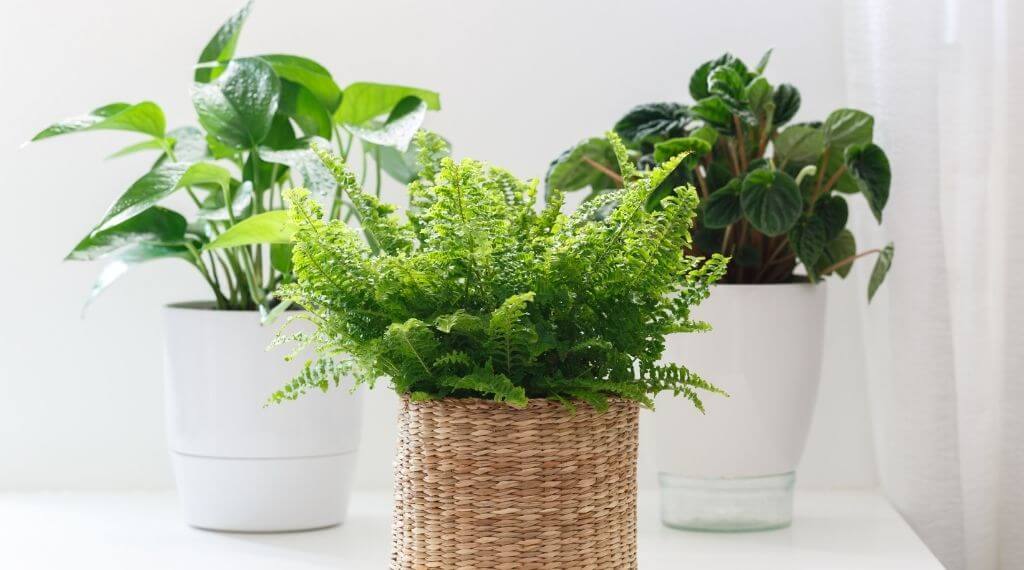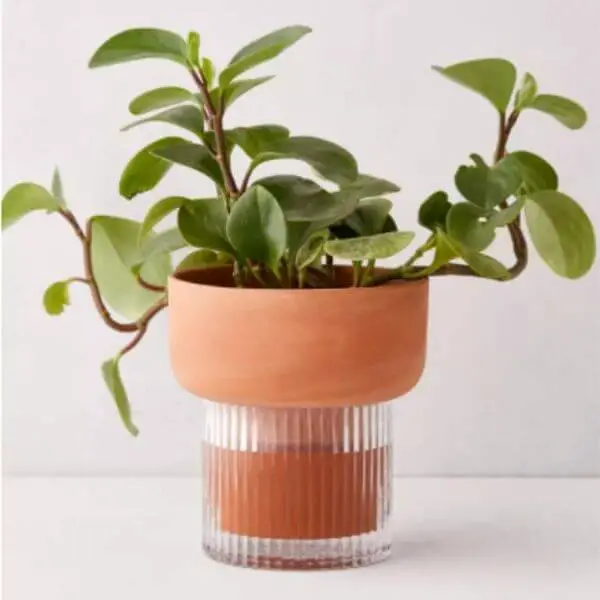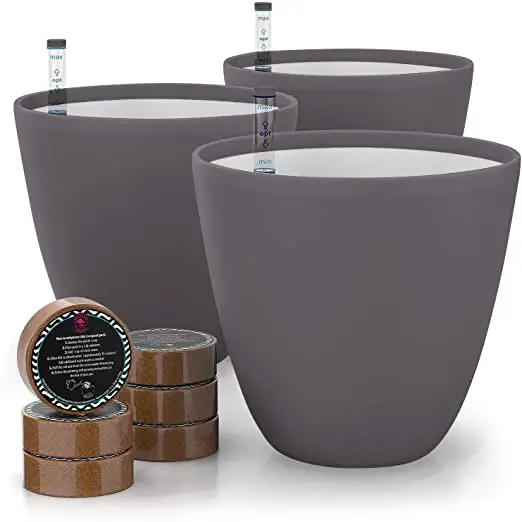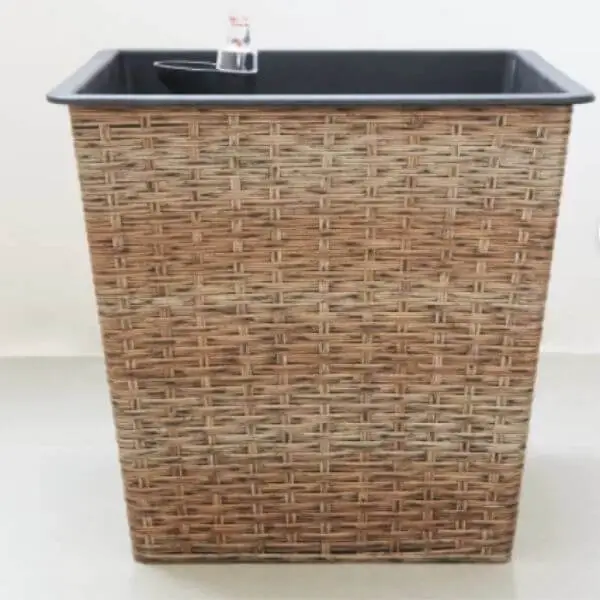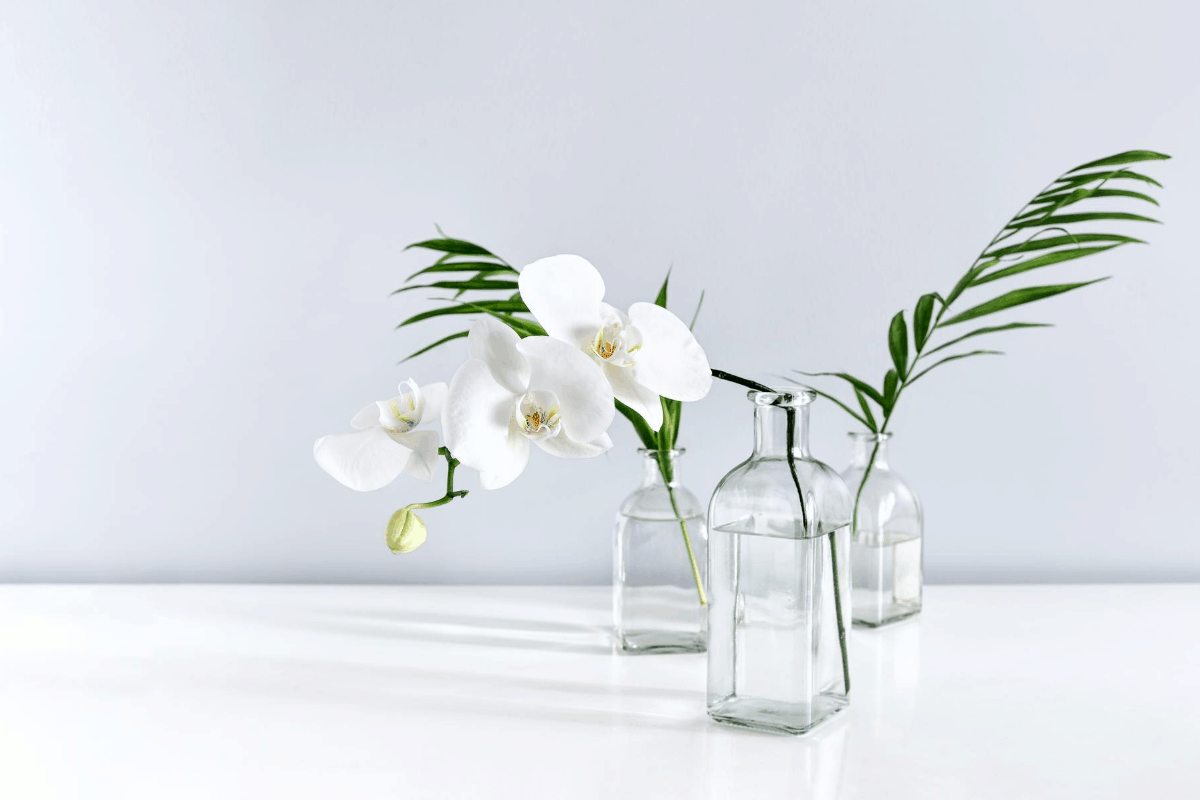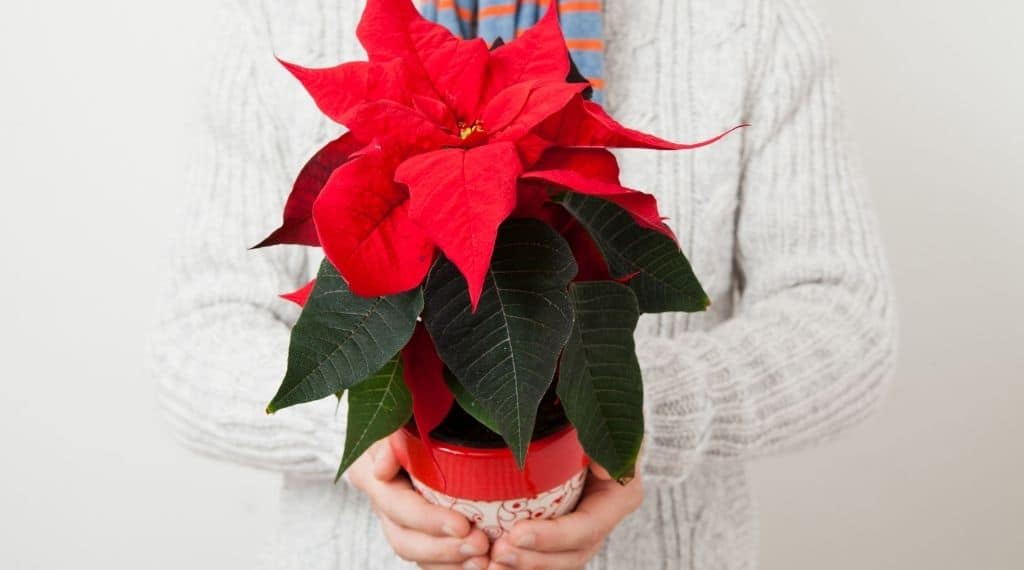Last Updated on October 8, 2021 by Plantiful Interiors
Self Watering Indoor Plants
We’re rounding up 5 of the best self watering indoor plants for your self-watering pots. Knowing how much water to give your houseplant, and how often, can be a constant guessing game.
By opting for a self-watering pot, you can eliminate some of the guesswork.
Self-watering pots basically allow your plant to water itself. However, not every indoor plant is suitable for a self-watering pot (such as the cactus).
This post contains affiliate links. As an affiliate partner of various brands, we earn a little commission on qualifying purchases, at no extra cost to you. When you purchase through our links, you help our business to keep going. So thank you for your support! You may read our full disclaimer for more information.
But, before we dive in let’s bust one myth upfront. Self-watering planters are unlikely to cause root rot. A quality self-watering pot, combined with the proper soil mixture that provides your plant with good aeration will actually lessen the chance of root rot from occurring.
Versus if you were watering yourself because you don’t have to guess if you’ve given your plant is getting enough water.
5 Self Watering Indoor Plants For Your Self-Watering Pots
African Violets Self Watering Indoor Plants
African violets are a very popular flowering indoor plant and also one of the best self watering indoor plants.
Ask anyone who has owned an African Violet plant and they’ll tell you how picky these plants are when it comes to watering.
African Violets do best when watered from the bottom up, which is exactly what a self-watering pot does. They prefer bottom watering due to their fragile leaves; the smallest drop of water on an African Violets’ leaves can damage them.
If you’ve noticed brown or yellow leaves on your African Violet it could be caused by water getting on them then being exposed to sun causing them to burn. Trim off any dying leaves.
African Violets are also fussy about the temperature of their water. They prefer lukewarm or tepid water which will be easy for your self-watering pot to maintain.
Before adding water to your pot’s reservoir, let it sit out for 24-48 hours so your plant doesn’t get shocked by cold water.
Peace Lilies Self Watering Indoor Plants
It is said that a Peace Lily’s white flower represents a white flag; a sign of truce and a symbol of peace.
This flowering houseplant brings elegance and sophistication to home decor and looks stunning as a centerpiece where guests can envy its beauty.
Peace Lilies prefer their soil to be kept moist but not soggy. This is what makes the Peace Lily a great candidate for a self-watering pot.
Often times when plant novices read instructions indicating they should keep their plant’s soil consistently moist, the guessing game starts. They pour water in, then think maybe that wasn’t enough so they add more.
Or, the next day it may look like the top of the soil is dry so again, more water is added. Even though you had the best of intentions, overwatering occurs and soon causes your Peace Lily to die leaving you wondering what went wrong.
The Peace Lily is an ideal plant for self-watering pots. Your Peace Lily will always have evenly moist soil thanks to the capillary action most self-watering containers provide.
Without the worry of waterlogging the soil; creating the perfect growing condition for your Peace Lily.
Pothos Self Watering Indoor Plants
Pothos plants are known as one of the most common and easy to grow houseplants which makes them a year-round staple at your local nursery, hardware store’s garden center or online from our favorite plant seller on Etsy.
There are many varieties of Pothos such as Neon Pothos, Golden Pothos (aka Devil’s Ivy) and the beautiful vareigated N Joy Pothos.
All of which look stunning trailing across the top of a bookshelf, overflowing from a hanging planter or trained to climb a trellis.
Though each Pothos variety has it’s own name and look, they all require similar care and are known to be one of the hardest plants to kill. If you’re worried you may be a neglectful plant parent, the Pothos is for you.
By planting your Pothos in a self-watering planter you’ll take this already low maintenance houseplant to an all new low.
It’s likely to survive if you forget to fill the water reservoir for a few weeks and can thrive in low light environments, prefect for offices and areas in your home where there isn’t much bright sunlight.
Tip: If you do forget to fill the water reservoir for a few weeks, give your Pothos a quick boost by watering it directly from the top until water starts to drain out through the bottom, then refill your water reservoir.
Boston Fern Self Watering Indoor Plants
Many people have a love-hate relationship when it comes to growing ferns indoors. Water conditions are one of the trickiest pieces to keeping your Boston Fern alive, which is why we consider them as one of the best plants for self-watering pots.
Boston Ferns love to live in moisture rich soil and humid conditions. It can be tricky to find the right watering schedule but by using a self-watering pot you’ll eliminate the guesswork; the plant will soak up what it needs.
Even though a self-watering pot will help ensure your Boston Fern gets the amount of water it needs, keeping the water reservoir filled is on you.
You will need to keep a close eye on this and will likely need to refill it more regularly than some of the other plants mentioned above.
Even though your Boston Fern will love soaking up the water supply, it will not do well if it’s sitting in water all the time. Make sure your self-watering pot has drainage holes and use a potting mix with vermiculite in it which will hold water.
Calathea Self Watering Indoor Plants
The Calathea is another very common houseplant that has an array of varieties, you’re certain to find a Calathea that suits every home decor style.
All Calathea varieties have unique patterned foliage, are pet-friendly and easy to care for. A common way to tell if your Calathea is getting enough water is based on the leaves. If they are curling, the plant could be underwatered.
By planting your Calathea in a self-watering pot you’ll allow the plant to moderate how much water it gets so you don’t have to worry about it drying out, as long as you keep the water reservoir filled.
Because Calathea’s like moist, but not soggy, soil conditions, bottom watering is often ideal. Bottom watering comes with a less likely chance of overwatering which reduces the likelihood of root rot.
The bottom-up watering mechanism of a self-watering pot means water reaches the roots and the surrounding soil at all times, encouraging strong root growth.
3 Quality Self-Watering Pots
There’s a large variety of self-watering pots on the market which makes it highly likely you’ll be able to find one that matches your preferred style, size, and price.
Here’s 3 different self-watering pots we recommend based on the size of your plant:
Advantages Of Self-Watering Pots
Now that you know which houseplants are best for self-watering pots, let’s look at why you should use a self-watering planter.
- Convenience: The fact that self-watering pots have their own automatic watering system, makes them convenient to have, particularly for those leading a busy lifestyle with little time to pay attention to the plants.
- Better Care: The self-watering system ensures that your plant constantly has evenly moist soil and that the water reaches the roots first, where it is most needed, facilitating healthy root growth. Its closed system allows it to trap a lot more nutrients in the soil than other typical flower beds, which offers the plant a much richer environment to grow in.
- Water Conservation: With the need to minimize water wastage more pressing now than ever before, it helps to have a planter that significantly reduces water wastage. There is no excess water being drained or evaporating, which is the case with traditional plant pots.
- Reduced Risk Of Disease: By keeping water off your plants’ leaves, the self-watering pot helps prevent the spread of several types of disease in the plant.
Is a self-watering pot right for your indoor plants?
Almost all indoor tropical plants are suitable for self-watering plants but not all self-watering planters are created equal.
While self watering indoor plants help take the guesswork out of when to water and how much to water, you’re not completely off the hook.
- keep an eye on the water reservoir and refill as needed
- ensure that proper drainage can occur
- regularly check the soil with your finger or moisture meter to ensure your self-watering planter hasn’t malfunctioned, giving off too much water or no water at all
If you tend to second guess when you should water your plant, have trouble keeping track when you last watered or are planning a vacation and don’t want your plants to dry out one of the self-watering pots mentioned above could be a great option.
Not only will you be able to keep your plants alive longer, it will make plant-parenthood easier while maintaining a busy schedule.

